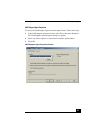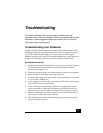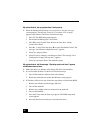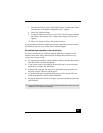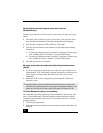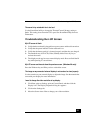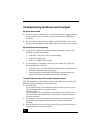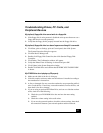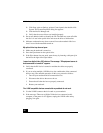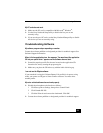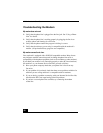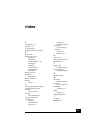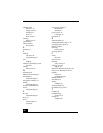
Troubleshooting Drives, PC Cards, and Peripheral Devices
57
Troubleshooting Drives, PC Cards, and
Peripheral Devices
My (optional) floppy disk drive can not write to a floppy disk.
❑ If the floppy disk is write-protected, disable the write-protect feature or use a
floppy disk that is not write-protected.
❑ Verify that the floppy disk is properly inserted into the floppy disk drive.
My (optional) floppy disk drive icon doesn’t appear even though it is connected.
❑ Click Start, point to Settings, point to Control panel, then click System.
The System Properties dialog box appears.
❑ Click the Device Manager tab.
❑ Double-click Floppy Disk Controller, then click Standard Floppy Disk
Controller.
❑ Click Delete. The Confirmation window will appear.
❑ Verify that Delete From All Settings is selected and press OK.
❑ Click Update in the System Properties window.
❑ Double click Disk Drive and confirm that GENERIC NEC FLOPPY DISK
is shown.
My CD-ROM drive is not playing my CD properly.
❑ Make sure the label of the disc is facing up.
❑ If the disc requires software, make sure the software is installed according to
the manufacturer’s instructions.
❑ A dirty or damaged disc may cause the notebook to stop responding while it
tries to read the disc. If necessary, restart the notebook, remove the disc, and
then check it for dirt or damage.
❑ If you are using an optional DVD Rom Drive, and can see video but not hear
audio, check all of the following:
❑ Check that your DVD-ROM drive does not have the mute setting
enabled.
❑ Check the volume setting in the audio mixer.
❑ If you are using external speakers, check the volume settings, then check
the connections between your external speakers and the notebook.



